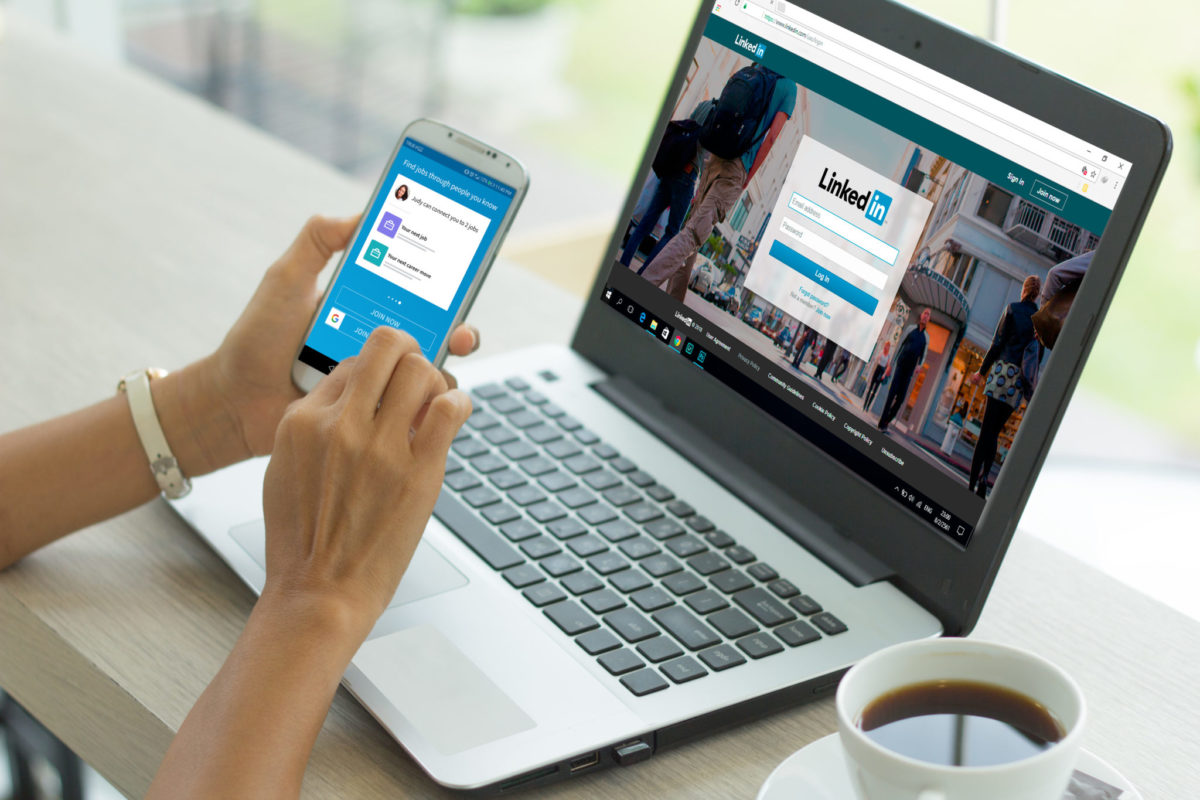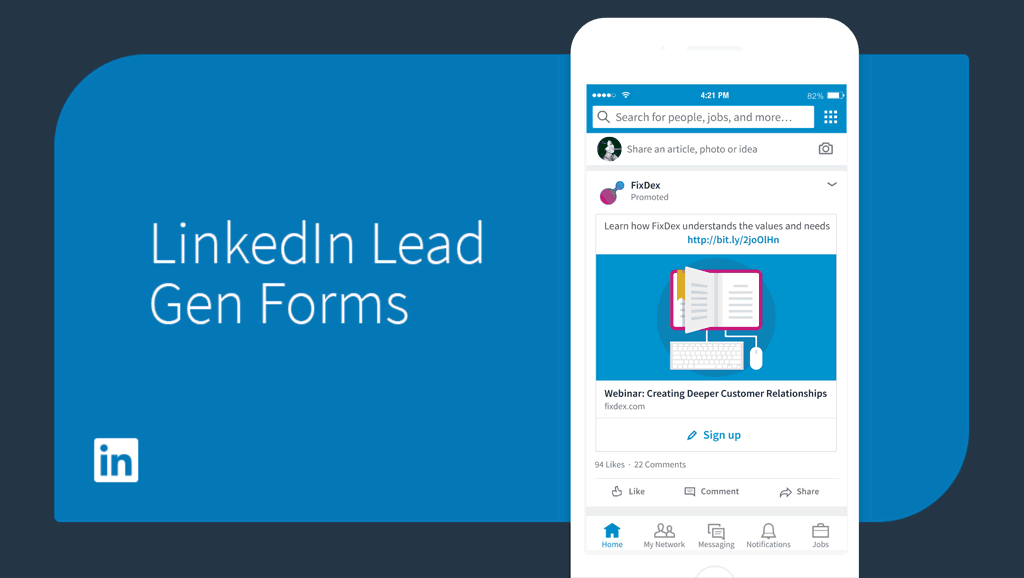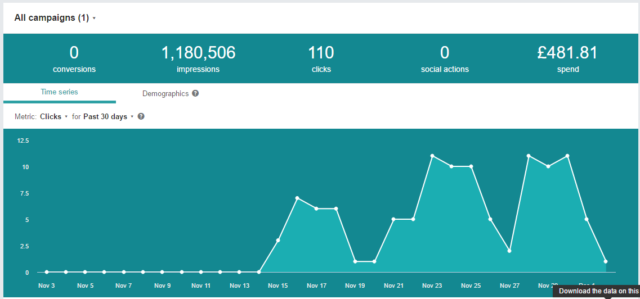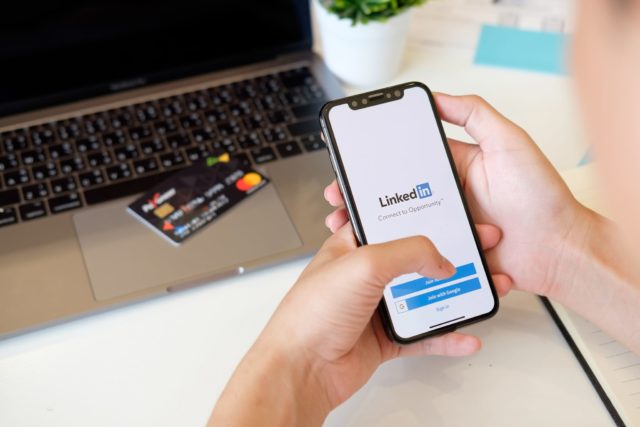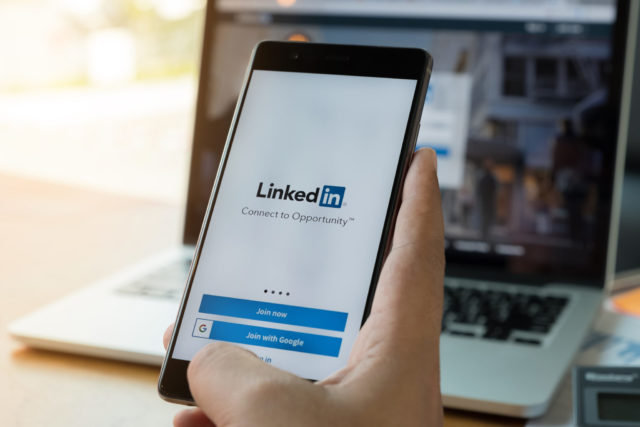Facts about our case study
Here are some case study facts for our LinkedIn lead generation ads:
- The client was a skills development company who works with large businesses all over the world
- The campaigns ran for a total of 26 days
- LinkedIn ads generated a total of 56 leads
- We had a budget of £3,000
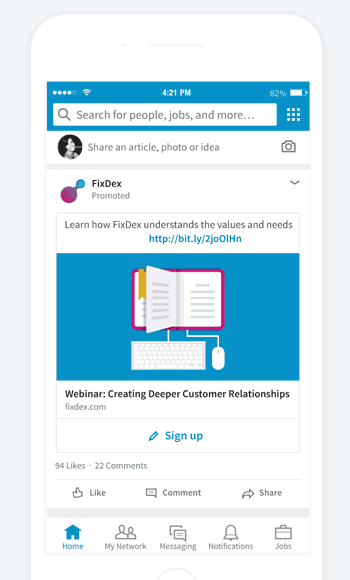
So, what are LinkedIn lead generation ads?
There are various options when it comes to generating leads through LinkedIn. We had already discussed LinkedIn text ads in a previous post, and the main focus of this blog is to discuss sponsored content ads, which is also referred to as native advertising.
These ads allow you to leverage your content marketing efforts and drive awareness of your company with highly engaging content. You also have the option of using LinkedIn’s lead gen forms, which seamlessly integrate with your content.
The majority of LinkedIn users (a total of around 57%) access the platform via a mobile device, and it makes sense to utilise these lead gen forms, as our case study will show. Leveraging the world’s largest professional network and accessing its data for over half a billion users would appear to be any B2B marketer’s dream.
Our client’s situation
This particular client had very informative, downloadable white papers in PDF format. These were accessible on the website to visitors once they had completed a form, filling in their information. The white papers were a product of extensive research the client had conducted, which they were providing for free for everyone who had subscribed to their mailing list.
They were already using Google AdWords to acquire leads. However, we felt LinkedIn could achieve better results through the many targeting options it has. Google AdWords had some limitations:
- It was difficult to target people who were interested in a specific topic, and were also the decision makers who had the authority for their company to become a potential future customer.
- Due to the broad nature of some of the target keywords, there was a lot of wastage due to irrelevant search terms for those conducting research on the topic area; as they could have been students, not professionals.
- The website had a few issues. The site was relatively slow (especially for mobile) and the conversion tracking was not properly in place.
Considering the above points, LinkedIn looked like a viable option which would enhance the user experience.
LinkedIn as a solution
We decided to opt for LinkedIn lead generation ads. More specifically, the LinkedIn lead gen forms, which would enable us to do the following:
- Capture leads and measure results without the use of their website. Using the lead gen form, we could direct prospects to the downloadable content via an URL at the last stage of the form.
- Allow us to collect more leads, as most of the information is pre-filled by LinkedIn.
- Target highly authoritative decision makers with specific senior job titles that were only applicable to the client’s industry.
All of the above is currently impossible to do via Google AdWords.
The lead gen forms would also provide a seamless mobile user experience which in theory, would lead to forms being filled at a higher completion rate.
How did we use LinkedIn lead generation ads?
We went through a process of understanding the type of audience our client was looking to attract. We then implemented their recommendations via several targeting options:
Targeting options
LinkedIn lead generation ads allowed us to target the following:
- Location: We targeted the UK and 5 other European countries where our client had offices
- Company size: We targeted companies which had over 500 employees
- Job titles: We chose specific senior roles, as our prospects were likely to have authority, such as “Director of…” and “Head of…” roles
- Industries: Choosing a specific industry limited our estimated target audience to less than 1,000 after selecting one industry, so we kept this open. However, we excluded various industries which were not applicable as per the below image.

Campaigns
We opted for LinkedIn’s sponsored content ads, which allowed us to promote the ads as a content update. This would then appear in the target audience’s feed. The ad would only show whilst they were using the LinkedIn app as we were only using the LinkedIn lead gen forms.
Ad Copy
We worked with the client to ensure the ad copy would resonate with their audience. We ran a total of four campaigns and for each campaign, we had four different ad variations. Each design version had different messaging which would allow us to test and decide, based on performance, what was working and what was not.
The results
The campaigns succeeded in achieving our primary aim of acquiring leads. We achieved the following with a total spend of £2,959.27:
- 56 leads
- 171,312 impressions
- 653 clicks with a CTR of 0.381%
- Average CPC of £4.53
- 153 social actions (likes, comments and shares)
- Cost per lead of £52.84
- 10.959% lead form completion rate
From the below graph, you can see how many leads we achieved on a daily basis. We noticed that mid-week (Tuesdays and Wednesdays), the number of leads were down as shown by the red arrows. If we were to run the campaigns again, we would reduce our bids on these days. Thursday to Monday performance was comparatively strong.
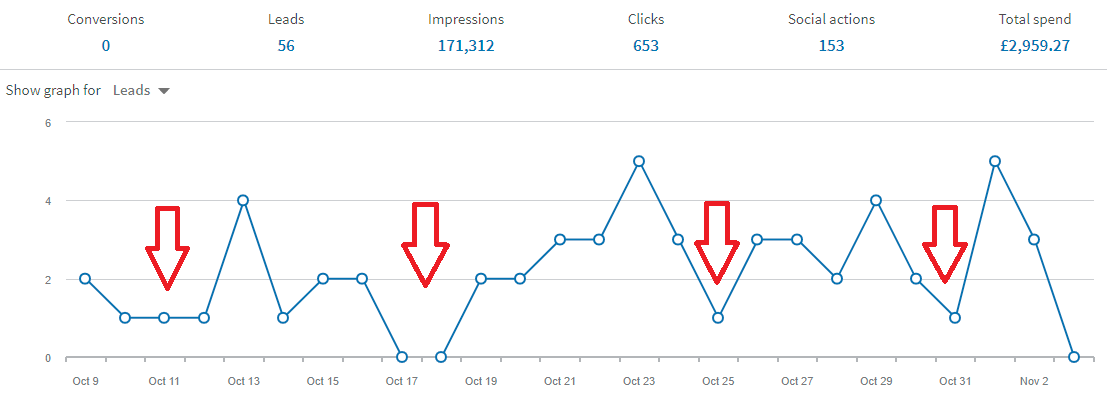
We started our daily spend cautiously, using the recommended bid amounts, and limited the daily spend to around £80 per day for the four campaigns. The daily spend gradually increased as we paused underperforming ads. We then noticed our lead completion rate improve for underperforming campaigns. Feeling more confident, we started spending more each day to maximise the number of leads generated.
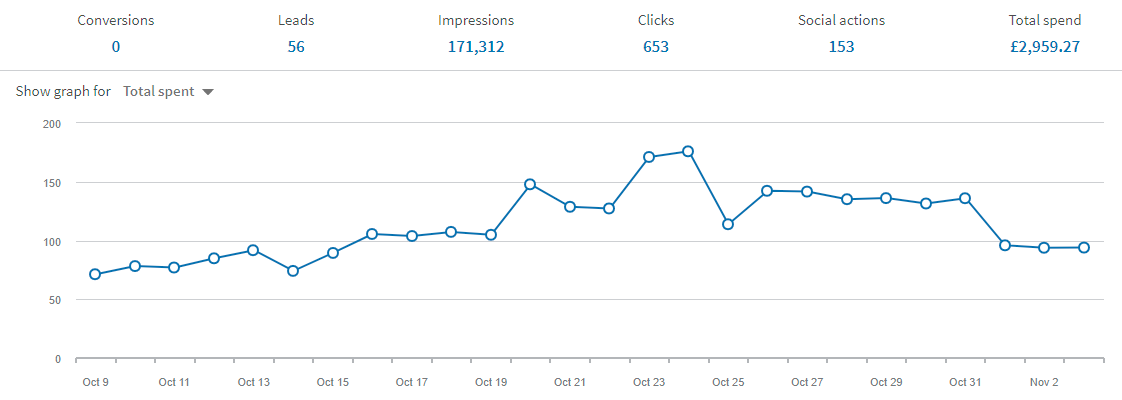
The quality of leads generated was ideal, and the client was happy with the cost per lead. They compared the cost with acquiring similar leads at a trade show event, which would have cost around £300 per lead. LinkedIn also allows you to see a range of demographics, including:
- Company industry
- Job seniority, title or function
- Company size
- Location
- Country
- Company
This is a small selection of job seniority demographics, which show that the majority of clicks were targeted at the correct audience. A total of 112 clicks were from people in entry-level positions according to this data below, which is a bit of a concern.
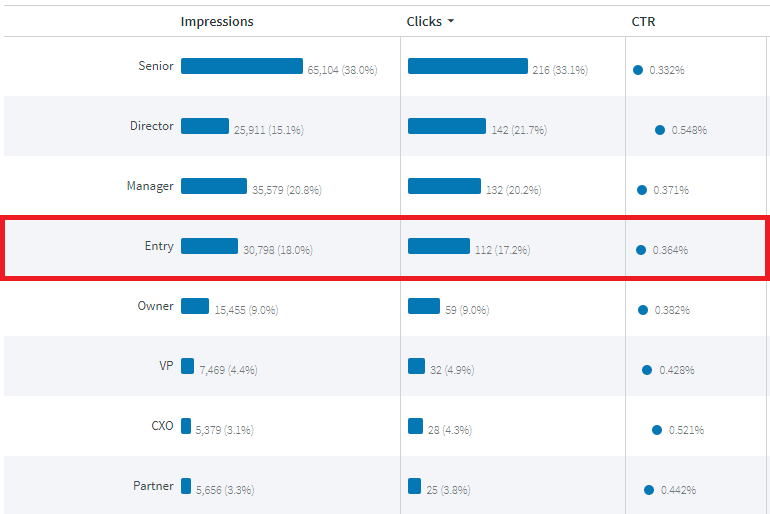
This could have resulted from the enable audience expansion option being ticked. If we run the campaigns again, we may deselect this option and see if we achieve better targeting.

Limitations
The results of this case study have limitations and may not apply to your business. The campaigns ran over a short period of 26 days, and may not necessarily be applicable to the majority of small to medium-sized businesses. It would also be interesting to test how effective the lead gen forms are, compared to the website’s performance. A form completion rate of nearly 11% however, would be a high benchmark for the website to beat.
The cost per click may seem a bit high at an average of £4.53 per click for a smaller budget. Keep this in mind before deciding to run with these ads and ensure you have enough funds for a reasonable testing period.
You can also check how much your cost per click is likely to be prior to running your ads, as this could vary depending on your targeting options, as well as the competition.
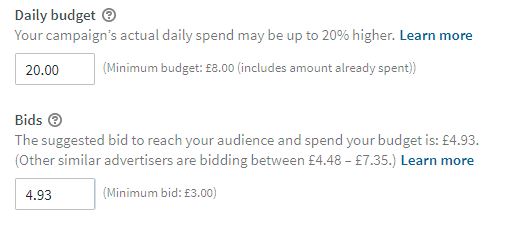
Conclusion
There definitely are benefits to running LinkedIn lead generation ads. These campaigns offer instant results in a relatively short period compared to the Google AdWords campaigns that we were also running. The growing importance of a mobile-first experience makes social platforms like LinkedIn the perfect opportunity to target the ideal B2B audience.
The lead gen forms are easy to set up in a step-by-step process which requires no development work. Your campaigns can be up-and-running in 24 hours (subject to approval). The main thing to think about, is ensuring you have a privacy policy on your website. Having a great LinkedIn company page would also help with lead generation, in case prospects do some research prior to entering their details.
Overall, the client was happy with the results and are willing to run these ads again for future campaigns. They are also using some of the results from the ad copy tests to influence their email marketing campaigns and choose better language for their audience.
The leads generated were soft leads which may take months or even years to convert into customers via their email nurturing campaigns. However, the high-value nature of these leads as potential customers meant the client saw the value in running these campaigns. The increased brand awareness among their ideal audience could also be seen as an added benefit.
To find out how we could help with your next LinkedIn lead generation ads, contact one of the Hallam team.
